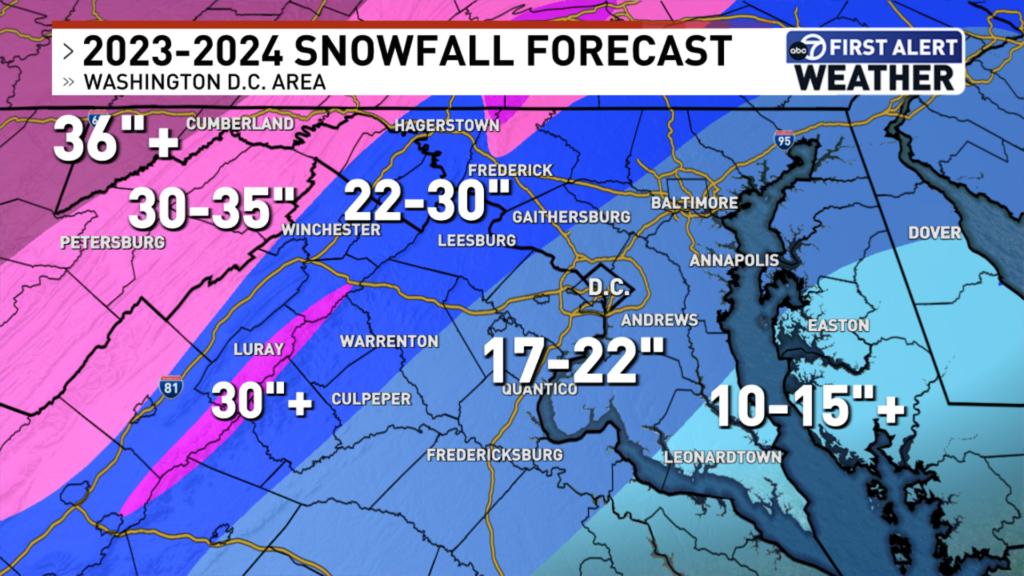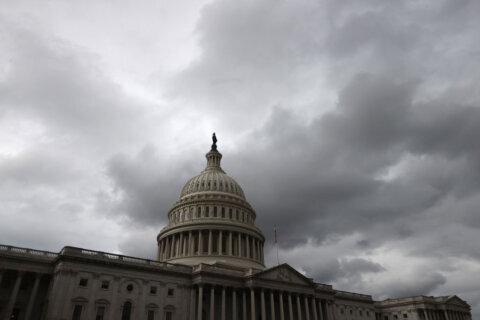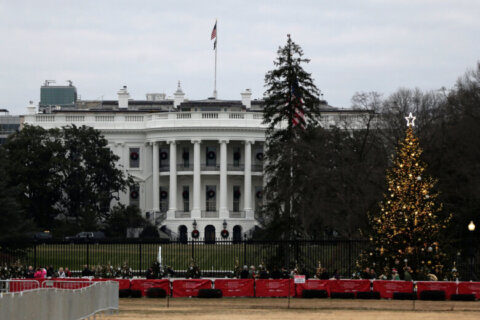After disappointing snowfall last year, D.C. area residents should have their shovels handy.
Veronica Johnson, chief meteorologist for 7News First Alert Weather, told WTOP that the First Alert Weather team is predicting 17 to 22 inches of snow for the D.C. metro area this coming winter. She said the average snowfall for D.C. is 13.6 inches.
In fact, counties farther north and west, including Loudoun County, Virginia, and Frederick County, Maryland, could see as much as 30 inches of snow throughout this winter.

As for Christmas?
“I don’t think we can expect a White Christmas,” Johnson said. “But I’m not going to rule out a few snowflakes that may come mixing in.”
Johnson said that starting in late December or early January, you can expect a lot of minor storm systems.
WINTER 2023-2024 D.C. AREA MONTHLY PREDICTION
| DECEMBER 2023 | 1″ WITH WINTRY MIX STORMS |
| JANUARY 2024 | 2-4″ SNOW |
| FEBRUARY 2024 | 12-15″ SNOW |
| MARCH 2024 | 2-3″ SNOW |
| TOTAL EXPECTED | 17-22″ FOR D.C., SURROUNDING COUNTIES |
“We really have to watch these events producing less in the way of snowfall and more [of a] wintry mix and more icy mix,” she said.
How many snow days will local students get this winter?
Johnson tells WTOP the biggest storms are predicted for February and there’s the possibility the area could see one or two nor’easters.
“There’s no bigger weight that is put into this forecast for this winter season than El Niño. And right now, it’s looking like we’re going to have not just an El Niño here, but a strong El Niño that is going to continue into early spring,” Johnson said.
According to the National Oceanic and Atmospheric Administration, El Niño is a climate pattern in the Pacific Ocean that impacts weather conditions around the world.
Johnson explained this will be the first winter El Niño in four years and the first strong El Niño in seven years.
Recent Reagan National Airport (DCA) Snowfall Totals
Winter Season* |
Total Snow |
El Niño/La Niña |
| 2022-2023 | 0.4″ | La Niña |
| 2021-2022 | 13.1″ | La Niña |
| 2020-2021 | 5.4″ | La Niña |
| 2019-2020 | 0.6 | |
| 2018-2019 | 15.5″ | El Niño |
*A winter season is defined as the months of December, January and February, but snowfalls can extend into March.
Johnson said temperatures this winter season are expected to be slightly above average, with the most potent cold bursts happening in February.
She said forecasting winter weather is becoming more difficult because of climate change. In general, cold snaps are shrinking, which means less snowfall.
While a stronger El Niño episode doesn’t guarantee more snow, stronger El Niño episodes have brought warmer average temperatures and high precipitation in the D.C./Baltimore area, according to NOAA.








